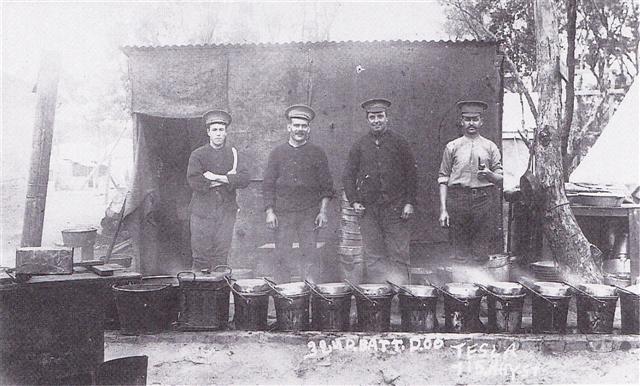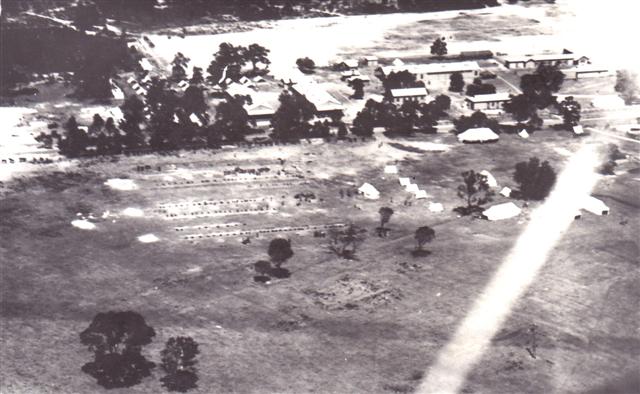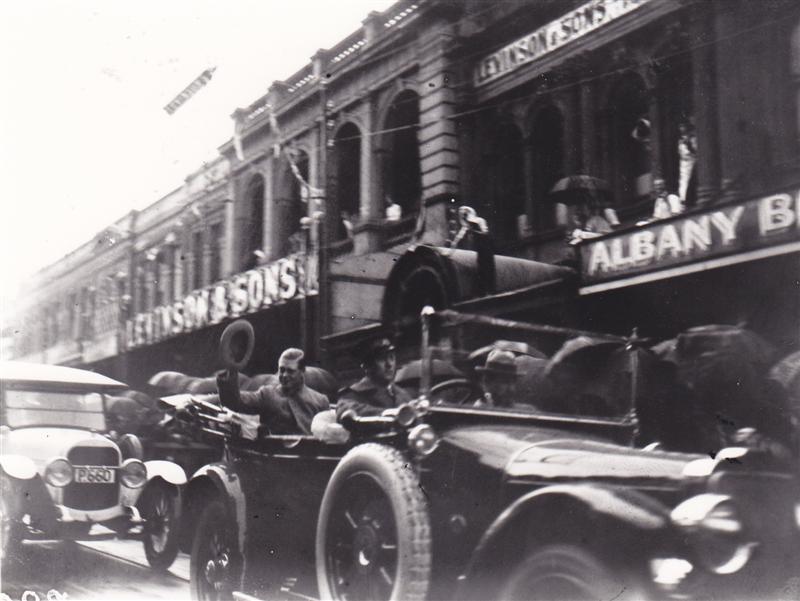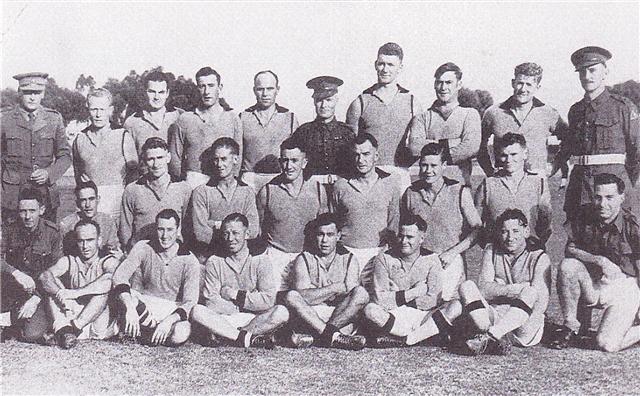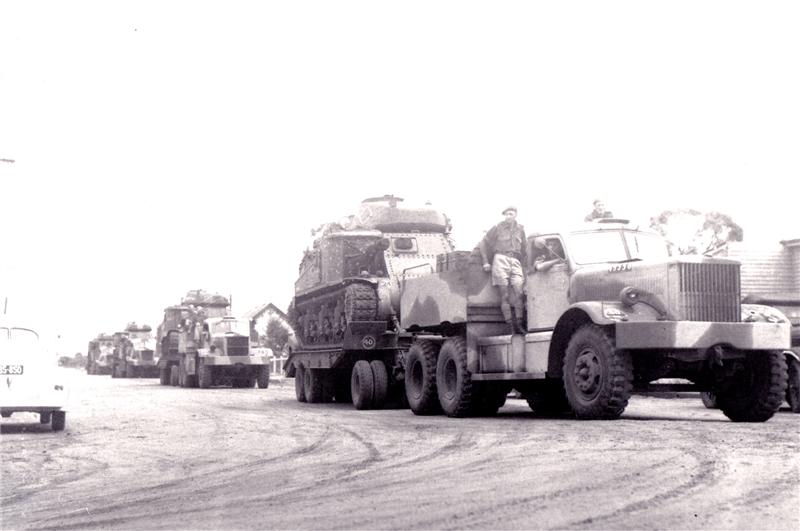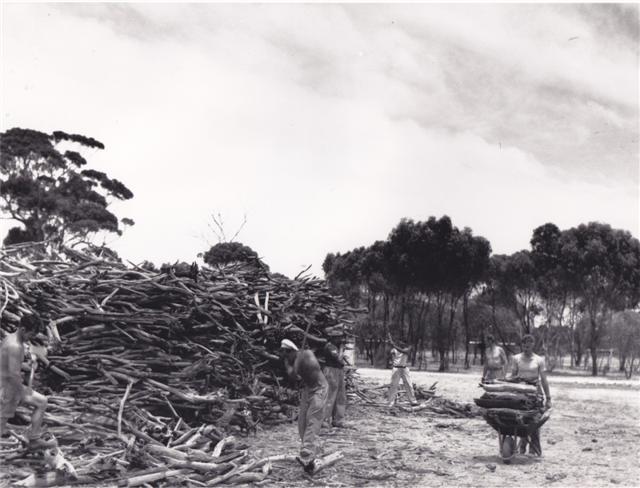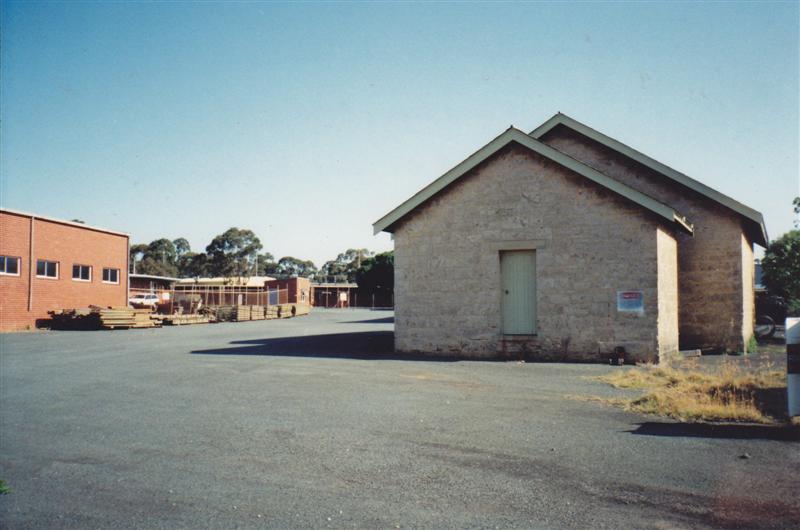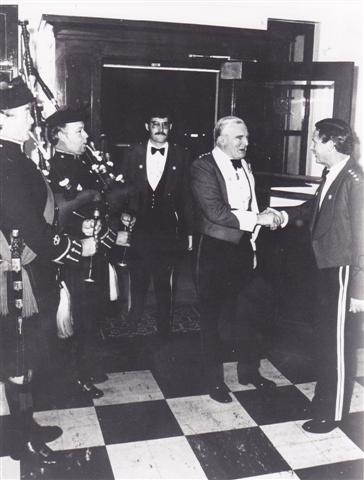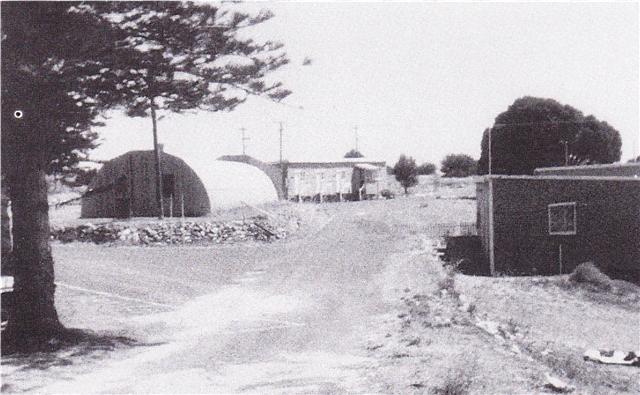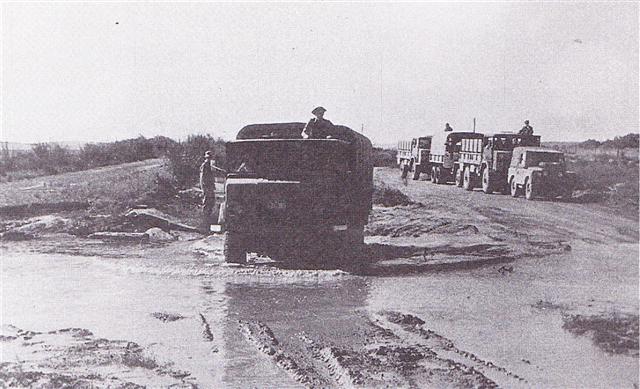Chapter 10
The Corps in Western Australia
Raising an AASC Component
Western Australia's forces were perhaps the least organised of all the state contributions to the Commonwealth. While it was the third colony formed in Australia, its long-running economic problems left it far behind the others right up to the time of its gold rush in the last decade of the nineteenth century. Its priority for allocation of units and funds was in line with its population and capacity, which was on a par with Tasmania, leaving the forces to continue to muddle along with ad hoc and hiring arrangements for supply and transport as had happened in the colonial era. Its planned Commonwealth forces were to be for garrison defence, with an AASC element of six at Perth-Fremantle and three at Albany Forts to support it. This element was allowed to be raised in 1907 as a captain, sergeant, corporal and six privates but only as Volunteers, waiting until the following year to be raised to Militia status 1, however this alternative means of getting a start at least enabled the Garrison Details to begin training earlier than funds would otherwise have allowed, and it had the benefit that its initial members joined because they enjoyed the work rather than for the pay.
The early camps were static ones in support of the infantry units at Tammin where the low manning level of the detachment was adequate for the task. But while the Hutton plan had not envisaged a field force brigade in Western Australia, the Kitchener plan did, so a mixed light horse-infantry brigade was formed in 1911 in preparation for a training brigade in the Militia the following year. This also resulted in raising of 4 Inf T&S Col in Perth at a restricted strength of 26, which together with the Garrison Details was converted in 1912 to 22 Coy supporting 22nd Infantry Brigade 2. And the increased tempo and strength of training units had this company now supporting camps at Tammin and Midland Junction with a detachment to Fremantle. As a further assist to the increased activity a Permanent Remount Section was established in 1912 to operate a depot at Guildford for the supply of horses for the camps and for federal government departments, with a staff of 14; but in the other potential aid to mobility, 5th Military District was notable as the only district not to find enough enthusiasm in the motoring fraternity to establish a section of the Australian Volunteer Automobile Corps. For the control of the Supply and Transport Service and Militia training, first a permanent instructor in 1913 and the following year an ADS&T were authorised but, with the competition of other arms for qualified members in the expansion of the Army, the manning situation did not get past a single training warrant officer before the manpower demands of the war intervened 3.
On The Home Front
On the outbreak of World War 1 the Militia was called up for camp and volunteers called for the AIF. The State allocation for the First Contingent was a Section of 4 Coy of 1 Div Train and 2 DUS as its contribution to the line of communication unit 11 Coy. Capt A. Matheson, the new OC of 22 Coy and recently returned from attachment to the Indian Army ASC, simplified recruitment of these elements by selecting volunteers from 22 Coy – 27 for 4 Coy and a dozen for 2 DUS. Following initial training at Midland Junction, where 2 DUS provided supply support for the AIF training camp, both elements were embarked for Victoria to marry up with the sections from South Australia and Tasmania, then undergo unit training at Broadmeadows Camp. The 4 Coy section left with the first convoy on Geelong in November and 11 Coy on the Berrima in the second convoy a month later. The next OC of 22 Coy Capt C.H.E. Manning took a leaf from his predecessor's book, raising 16 Coy (6 Inf Bde Train, later of 2 Div Train) from a surfeit of 22 Coy volunteers at the 1915 Easter camp. That unit moved to Melbourne and was concentrated with 14 and 15 Coys at Broadmeadows, sailing on the Afric for Egypt in May. In mid year 7 DUS was raised for 21 Coy and half of 4 Sqn of 1 Remount Unit was dispatched in November 1915 4. Subsequent recruits went as reinforcements, also serving to support the camp at Midland Junction while awaiting embarkation.
Meanwhile 22 coy continued its function of integrating and training successive inputs from the Universal Training cadets in the unit, and providing support to brigade training camps and the AIF training camp. This influx was balanced by an uneven outflow to the AIF as the calls from the front and the pressures of pro- and anti- war groups raised or lowered the enlistment rates. With only inflow after the war, pressures in the populous states caused an increase in units and an accompanying renumbering of brigades which resulted in 22 coy becoming 16 Coy in 1919 5, still only one company, but a considerably expanded one since its formation. Support of both AIF and Militia activities was provided from the supply and Transport Section, initially comprising the Remount Section, but expanded with an ADST, instructional staff and a small MT Depot of AIF drivers in transit or classified as home service only, later augmented with civilian employees. This small empire evaporated with the end of the war, leaving as before the Remount Section.
The reorganisation of 1921 left Western Australia outside the mainstream divisional structure of the eastern states, its field units organised into a mixed brigade of infantry and light horse which was part or a 5th Division that consisted of the mixed light horse-infantry brigades of Western Australia, Tasmania and Queensland rather than the norm of infantry brigades. While Head-quarters 5th Division was also located in Perth, HQ 5 Div Train was in Brisbane and had as little control over the outlying AASC companies as did Head-quarters 5th Division over the mixed brigades in the other states. The AASC component in Western Australia was 13 Bde S&T Coy formed from 16 Coy, a simple name change, although reduction of strengths to 25 per cent of establishment in 1922 did make a difference which was to persist for an increasingly difficult decade ahead. It was initially commanded by Lt-Col C.H.E. Manning DSO OBE sometime commander of 2 Div Train in France, who had perhaps hoped that the Militia Train HQ would come with HQ 5 Div to Perth, but it was allotted to Brisbane, and so he gave way to Capt A.M.P. Montgomery who was eventually replaced in 1934, after an unconscionably long 12 years in command, by Maj I.M.F. Stewart.
The company organisation came up for review in line with the RASC establishments being adopted by the AMF: restructuring commenced in mid 1928, first creating a Horse Transport Section and raising 1st and 2nd Depot Sub-Sections. These were reconsolidated by 1930 into 13 Bde S&T Coy now comprising a headquarters, supply section and horse transport section, with a further nominal change of the latter to MT Section in 1934 to mark the motorisation decision, though the token motor vehicles provided did not displace horse wagons as basic transport. The final move was in 1938 when the company's supply section became 13 Bde Sup Coln and the MT section 13 Bde Amn Sec in a miniature version of the divisional supply columns and ammunition companies adopted in the eastern states, but the overall effect of all the changes was insignificant – it was and remained a supply and transport company appropriate to a brigade as it had been since 1911. It was unfortunate that it should not have been able to retain continuity of title to preserve an unbroken identity 6.
Infrastructure in 5th District Base included the nominal Permanent Supply and Transport Section which had been established in 1913, but in real terms this was simply the Remount Section which operated 10th Remount Depot at Guildford and 14th Remount Depot at Karrakatta. The carryover position of ADS&T remained unfilled, and the temporary reclassification as Staff Officer S&T brought no luck either. Establishment of DADS and DADT(MT) positions in 1927 also delivered their name only, as planned supplies and mechanical transport sections failed to materialise in a deteriorating budgetary climate 7. The minor MT allocation in the State was manned initially by two Artillery bombardiers seconded to the S&T Section for Militia training and base cartage tasks, until they were transferred to AASC in 1932; it was expanded marginally into 5 MT Sec in 1934. The mechanisation decision, while producing little in the way of motor vehicles, at least heralded a more serious approach to MT training in the Militia, so the DADT(MT) was filled by Maj R.H.A. Grabham, then the SO S&T by Lieut J.B. Carmody the following year until replaced in 1939 by Maj W.B. Garner as ADST; and the DADS position was occupied by Capt T.V. Taylor in 1936, a position soon to be given some real meaning. In a unique recognition of reality, the Chief of the General Staff advised the Adjutant General and Quartermaster General in 1937 that 'it may be necessary to reduce the peace establishment of other arms which do not have to function immediately on mobilisation' – a welcome if belated General Staff recall of a truth ignored for the two postwar decades. In this recognition of reality 8 Sup Pers Coy was raised, but in another angle on reality 5 MD Rmt Tp was also formed as a Militia unit to assist the Remount Section handle a growing horse requirement for an army where the actuality of mechanisation fell far behind the intent 8.
In the Home Base
September 1939 saw the Militia called into camp for protracted training while the moves for raising a second AIF were in progress. Western Australia provided a Section of 6 Div Amn Coy which was assembled at Northam Camp and dispatched to Puckapunyal to join the other state quotas forming 6 Div AASC; subsequent contributions to AIF divisions were by quotas allotted to the Western Command, these drafts being integrated into units raised in the eastern states or sent to the Middle East as reinforcements. For its local defence the State had Militia garrison brigades supported by HQ W Comd Fd Tps AASC commanding the second line units W Comd Sup Coln, W Comd Amn Coy, and W Comd Pet Coy, with corps troops units W Comd Amn Sub-Park and W Comd Pet Park 9.
As the threat from Japan's thrust south developed, Western Australia became a vulnerable area and, a reluctant original participator in federation and prone to secessionist movements, pressed the Commonwealth government to meet its constitutional responsibilities for a more realistic defence force commensurate with its isolation and vulnerability. Two of the six divisions lavished on Sydney and Melbourne's protection were moved to the west, 4th Division in April and 2nd Division in July, bringing with them their HQ CAASCs and 23, 24, 25 and 17, 18 Coys respectively. Western Command became 3rd Corps in mid 1942, CAASC Lieut-Col F.H. Fitzpatrick DCM raising 3 CT Amn, Pet and Sup Coys (a year later converted to 37 and 38 Coys), and HQ 3 CT Tpt Coln with 128, 137,138 and 139 GT Coys raised from W Comd Fd Tps and 109 Res MT Coy. The corps troops supply units, 11, 12 and 13 DIDs became 43, 44 and 45 Sup Dep Pls. 1st Armoured Division, formed originally to become part of 1st Australian Corps in the Middle East, and something of a liability after the switch to the Pacific theatre, was also stationed there with an AASC complement commanded by Lieut-Col D.G. McKenzie of HQ CAASC, 2/1TkTptr Coy, 143 GT Coy, 3 Mot Bde Coy, 1 Armd Bde Coy and 1 Armd Div Tps Coy from December 1942 until dispersed in September 1943, by which time it had been further whittled down to two brigade and a tank transporter companies. The frustration of highly motivated and trained soldiers, who had to sit out the war in the sandhills north of Perth against a quickly evaporated enemy threat, is epitomised in the end of a poem by Dvr S.H.J. Hutchinson of 1 Armd Bde Coy based in Mingenew:
And when this war is over, and the honour rolls are read,
Our names will not be on them because none of us are dead,
Then the people of Australia will think of us anew,
As the men who fought the sandflies – we – the Mice of Mingenew;
By June 1944, with 2nd Division disbanded, 4th Division departed for Torres Strait and 3rd Corps disbanding and reverting to Headquarters Western Command, the corps troops were also disbanded and the army in the state wound back to a support function 10.
The infrastructure behind the field force was at the beginning 5th District Base, then Western Command Line of Communication Area, the ADST position being filled by Lieut-Col F.W. Maclean DSO OBE then Maj A.J. Stone. Early and continuing activity began with 8 VCC and W Comd VRD gathering and issuing the civilian motor vehicles necessary to mechanise the Army, while 9 Aux HT Coy retained the horse wagons for base duties; the Remount Section amalgamated with 5 MD Rmt Troop to form 3 Rmt Sqn. General transport units were begun with the formation of W Comd Mechanisation Depot embodying 5 MT sec and newly raised 9 Res MT Coy; this base was built up to 109, 121 and 122 Res Tpt Coys, a platoon of 4 Amb Car Coy supplying ambulances for casualty evacuation. W Comd BIPOD maintained fuel supply and reserves and 8 Sup Pers Coy made detailed issued of foodstuffs, with depots at Karrakatta, Northam and Rottnest Island 11. In April 1942 WA L of C Area replaced W Comd L of C Area, controlling the administrative units, the AASC ones now being 124 and 125 GT Coys, 9 Aux HT Coy, 4 Amb Car Coy, 8 Sup Pers Coy, DSD Midland Junction, BSD Spencers Brook, 5 Fd Bch Coy, 11 Fd Bky and 5 L of C Area BIPOD; the input of recruits to these units was effected through 8 AASC Trg Coy. 5 L of C Area gave way to WA L of C Area in both fact and unit titles, and that in turn reverted to Western Command after disbandment of 3rd Corps, however the supply units in the mid-1943 brick reorganisation were liberated from these mindless whims of name change by taking the neutral titles 7 and 8 Sup Dep Coys which commanded 51-63 Sup Dep Pls. This range of units was progressively reduced and rationalised as need evaporated with the departing field force, running down to 8 Sup Dep Coy and 124 GT Coy by early 1946 12.
Peace and War
Western Australia's place in the war had turned down very rapidly as the Japanese threat receded, and the postwar Army itself receded into a housekeeping Interim Army. Resurrection of the Citizen Military Forces in 1948 brought a virtual repeat of the historical allotment of AASC to Western Australia – a single company, this time 10 Tpt Coy, taking its number not from any historical connection which should have been the traditional 13, particularly as it was supporting 13th Brigade; rather it was simply the tenth company to be allotted and was christened accordingly. Under the impetus of National Service from 1951 some expansion was necessary to accommodate its output of five years service in the CMF: 2 Sup Coy was raised at Karrakatta, converted in 1954 to 14 Sup Pl, then expanding to 5 CSD, 133 and 138 Sup Dep Pls in 1957, until absorbed into 5 Sup Dep, a mixed ARA/CMF unit in 1965. To control the group of units HQ W Comd Tps AASC was added as a training and administrative headquarters, the group being based first at Karrakatta then Artillery Barracks Fremantle, moving in March 1963 to Leighton. After the contraction of 1960, 10 Coy's 26, 27, 28 Tpt Pls and 10 Comp Pl were replaced by 21 and 29 Tpt Pls and 30 Sup PI, while 10 Sup Pl replaced 65 CSD 13.
Postwar a DADST was established on HQ W Comd, controlling ARA base units 105 Tpt Pl and 105 Sup Dep Pl. The latter was converted to 5 Sup Dep in 1965, also absorbing the CMF supply units. As part of the Vietnam expansion 90 Tpt Pl was raised in 1966 and was used as a source of reinforcements for Vietnam and domestic transport for Western Command until moved to Sydney in April 1969 to prepare for deployment to Singapore as part of 112 ST Coy in the ANZ then ANZUK Force component of the Five Power replacement for the departing British Far East forces. In the training field W Comd Trade Trg Centre was formed in 1952, conducting all arms driving and clerical training courses for the Command until its demise in 1973 14.
On 1 January 1973 the DADST became Chief Transport Officer, losing supplies and POL to RAAOC and absorbing responsibility for movements. The final step was a parade at Campbell Barracks Swanbourne on 3 Jun 73 which was reviewed by Chief of the General Staff Lt Gen M.F. Brogan CB, marking the end of a 66-year tradition, and a contribution small in scale by the standards of the more populous states, but proportionately and qualitatively as good as any. The Corps passed this responsibility to the RAAOC and RACT.
Footnotes
1. See Appendix 3; CPP 1906 vol II Finn Reports 1905, p17 and part 1906, p12.
2. MO 2/1911, 293/1911, 428/1912.
3. MO 75/1911, 57/1912, 505/1913; CPP 1911 vol II Kirkpatrick Report, pl7; Amy List 1908-14.
4. Report upon the Department of Defence 1914-1917 Part 1, p73-4, 76; Broinowski, p3.
5. MO 150/1919; Report on DOD, p276.
6. CYB 1921-38; Army List 1921-40; AA MP729/6 37/401/79 QMG Minute Appendix Z.
8. Army List 1935-40; AA B1535 763/2/63 QMG on Military Board Agenda 2/32 Appendix A; PMF Establishments for 1939-40, p11-14; AA MP729/6 37/401/79 of 21 August 1937 and Appendix A CGS on Peace Organisation AASC.
9. AWM 52 10/2/23; Army ORBAT December 1941.
10. AWM 52 10/2/5, 10/2/17, 10/2/I9, 10/2/23; AWM 54 199/215 Maintenance Organisation September 1941 Appendix A, p4; poem by Dvr S.H.J. Hutchinson in The Mice of Mingeneu.
11. AA A5954 255/3 S&T Conference Précis; AWM 54 703/5/4 Army ORBAT 1942 AASC, p30-2.
12. Army ORBAT October 1942-June 1943; AWM 54 703/5/4; Army ORBAT 1942, p27-32; 703/5/2 Army ORBAT 1946.
13. AWM 54 703/5/1 Army ORBAT 1948; AWM 51 146 Army ORBAT 1948/49; Army ORBAT 1960, 1963; RAASC Digest 1967.
14. AWM 51 146 Army ORBAT 1948/49; Army ORBAT 1958, 1960, 1963; RAASC Digest 1967-71.

